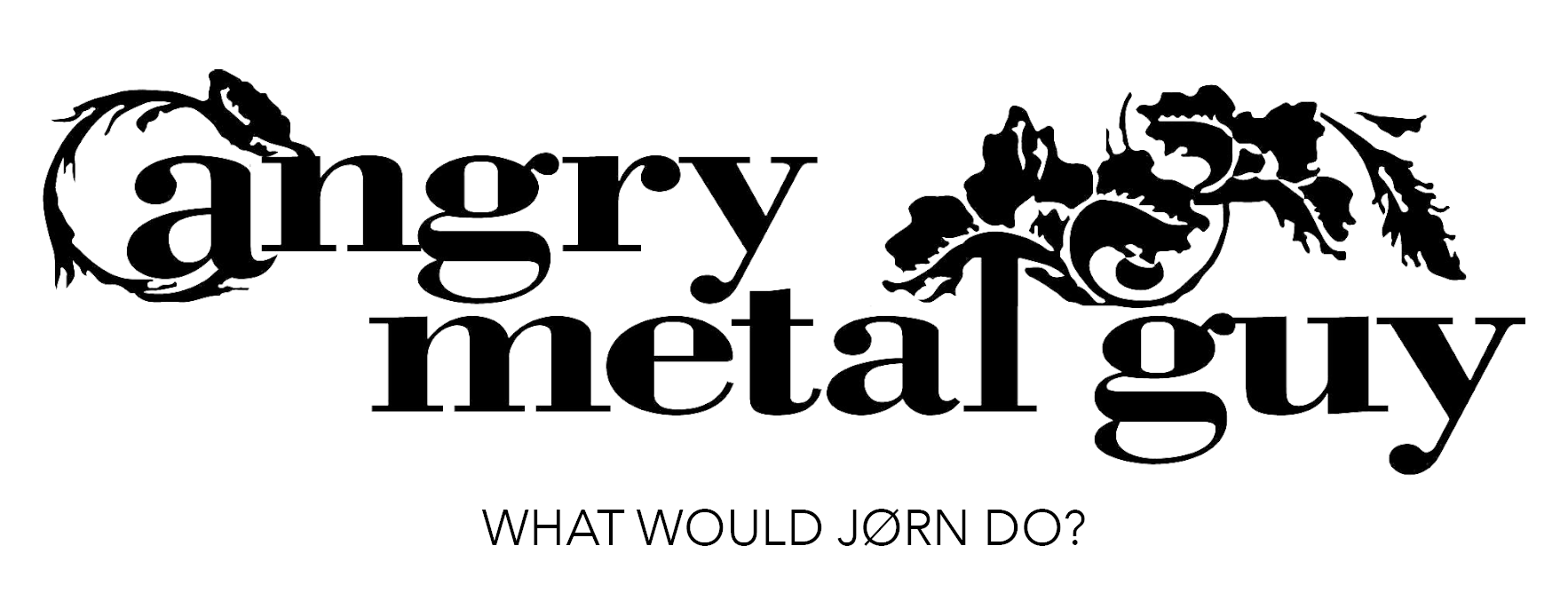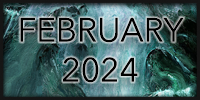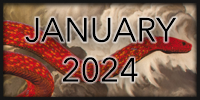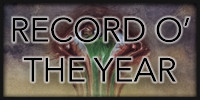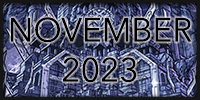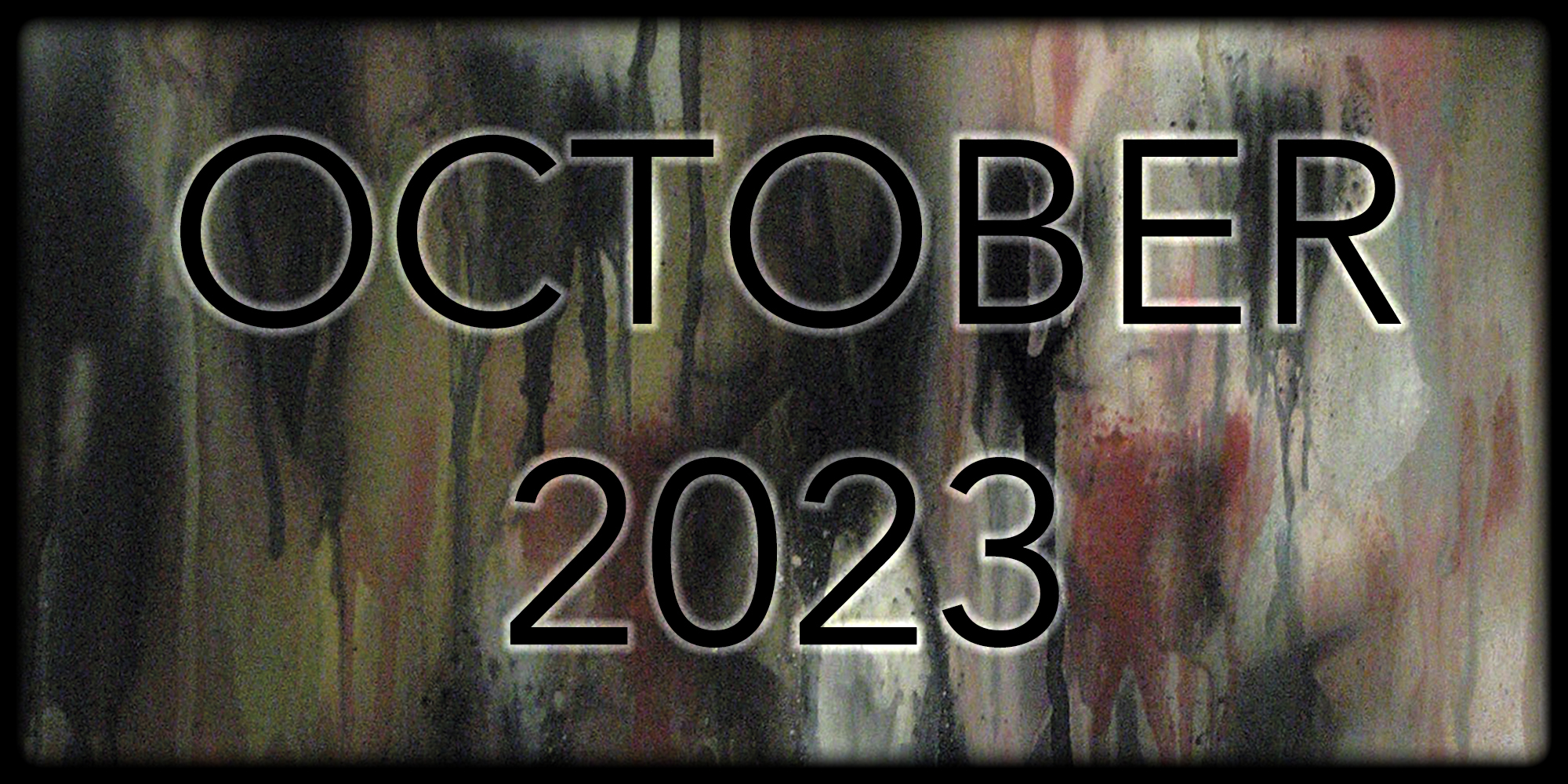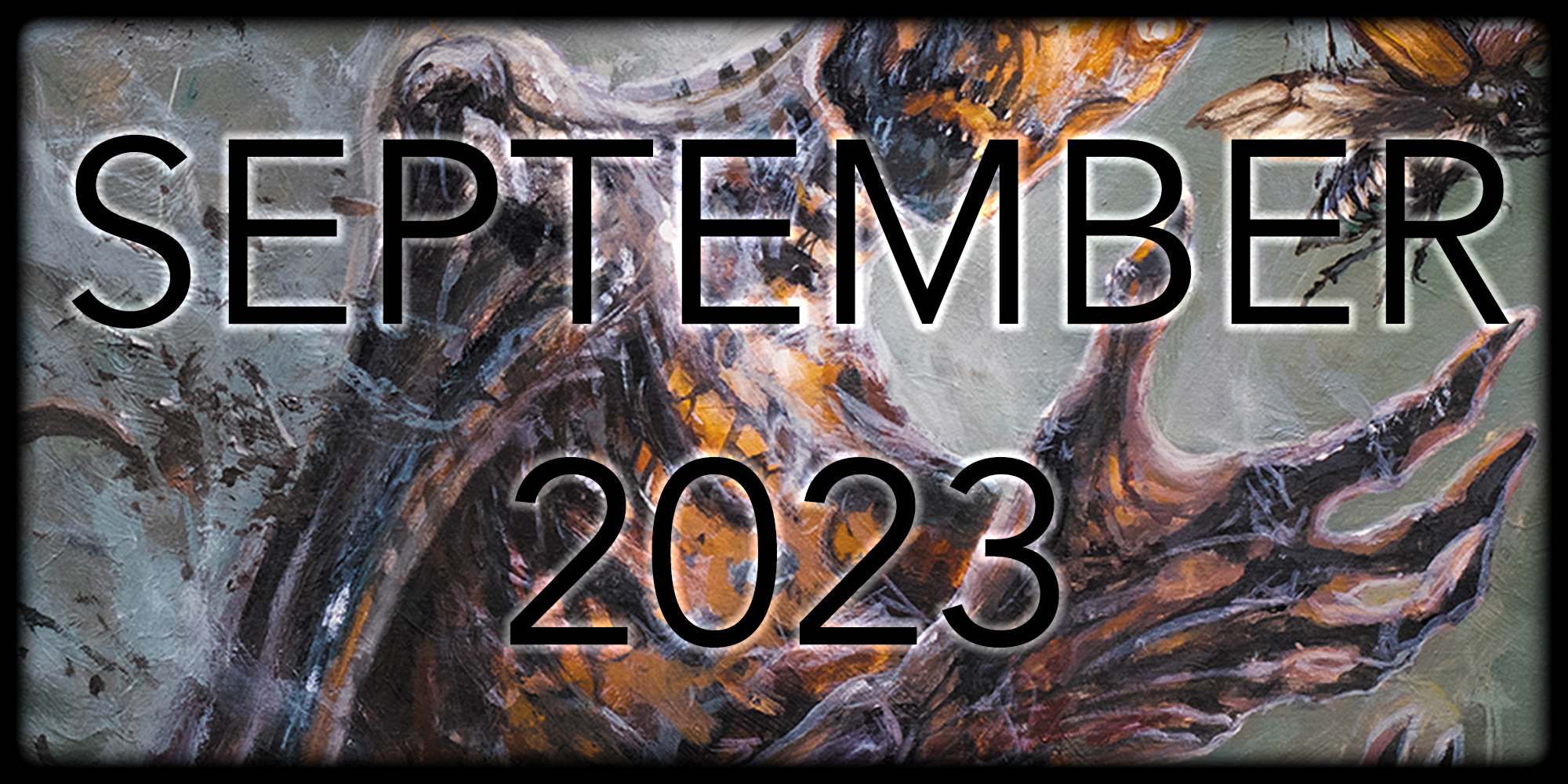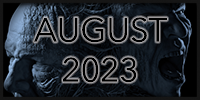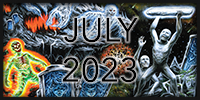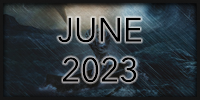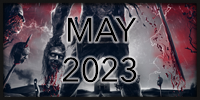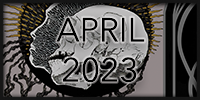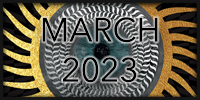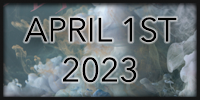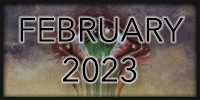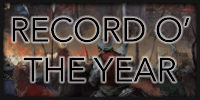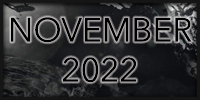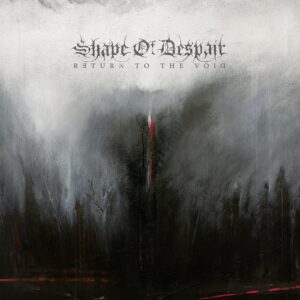
With six songs running just shy of an hour, Return to the Void is more a marathon than a sprint. No track is under 8 minutes with the closer clocking in at just under 12. Length is not an issue though if the compositions are structured to maintain interest. The opening title track is a good example of such deft writing. Plodding doom riffs are draped with weepy synth lines, and guttural death groans are paired with lilting, angelic female vocals for an effectively bleak journey. It’s the formula Shape of Despair have used forever and it still holds grave water. Things are kept very minimalist, but the ghostly, vaguely classical feel of the thing somehow holds you in thrall. The same melancholic magic pervades “Dissolution,” where a more old-timey variant of goth doom takes root and flowers. While not markedly different than the opener, this bears an early Anathema and My Dying Bride vibe which takes me back to the gloriously bleak 90s.
The album floats along without much variation, and though no tracks are bad, there’s not a lot by which to distinguish them either. Memorable riffs are few, though the guitars trill sadly with rich sadboi sweetness. The very minimalist nature of songs like mammoth closer “The Inner Desolation” works against the concept of dynamic writing. There’s so little going on for long stretches of time that the music is always at risk of fading into background noise, and maintaining rapt attention becomes a challenge by the halfway point. When you do focus however, it can carry you away on ethereal waves of droning beauty, with “Solitary Downfall” being a good example. Sadly, the same complaints Jean-Luc Ricard leveled against predecessor Monotony Fields are equally applicable here. The lack of diversity causes the songs to bleed together into a weepy mush that tests the attention span. It’s all beautifully tragic, but the uniformly grey nature becomes a one-trick dead pony eventually. At 57 minutes it feels long, and several cuts could be shortened by 2 minutes, especially the closer.
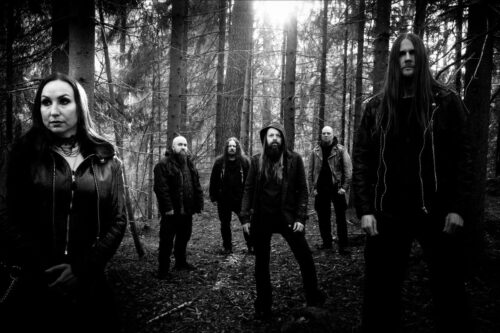
Henri Koivula’s death roars are suitably large, though I wish he would add more diversity to his delivery. Though he strays into clean singing at times and lapses into a menacing blackened rasp during “Forfeit,” he mostly sticks to a standard death growl. More changeups in style would add extra spice to the proceedings. Natalie Koskinen (Collapse of Light) does a great job offsetting Henri’s vocals with forlorn, angelic cleans, and in an expanded role she ends up being the savior of several tracks, adding memorable footholds to the plodding set pieces. Her contributions are especially impactful on “Dissolution” and “Reflections in Slow Time.” Both Jarno Salomaa and Tomi Ullgrén are giants in the sadboi world, having spent time in Rapture and now Counting Hours, and they’re well-versed in despondency-core. They deliver an appropriately bittersweet collection of trilling harmonies, but the actual doom riffs are often rudimentary and lack hooks and gravitas.
Return to the Void is another competently downtrodden release from Shape of Despair, but it’s held back by a wash of way too similar sounds and moods. You can’t paint in one shade all the time while maintaining maximum interest, though these folks have come close at times. I can’t help but compare this to Collapse of Light (which also features Natalie Koskinen). Their Each Failing Step debut did a lot of the same things but with more dynamism and punch, and I think this is where Shape of Despair is falling short these days – too much beauty, not enough raging beast.
Rating: 3.0/5.0
DR: 7 | Format Reviewed: 320 kbps mp3
Label: Season of Mist
Websites: facebook.com/shapeofdespairofficial | shapeofdespair.bandcamp.com
Releases Worldwide: February 25th, 2022
Doom_et_Al
Over the course of four albums, Shape of Despair’s music has explored a deceptively complex idea: the paradoxical nature of beauty in grief. Their music is the feeling of clutching a piece of clothing that retains the scent of a lost loved-one; the smile in a photograph of someone no longer with us; the etching of tears in snow. Shape of Despair propose that beauty can both soothe and deepen grief. Their ultra-slow, ultra-heavy music, although brutal and crushing, has a fragility that many other bands lack. Over the course of four albums, beauty in grief has remained a thematic constant, and arguably reached its apotheosis with 2015’s Monotony Fields. I remember listening to that for the first time and being unable to breathe, as if the air had been sucked out of my lungs. I could feel again the profound sense of a loss I had experienced months before, deep in my bones. Except, when the album ended, I felt better. This experience shaped my tastes in a major way. So Shape of Despair an important band for me, and Return to the Void an important album.
Return to the Void is very much Shape of Despair sticking to their established sound, but stripping back some of the melodic flourishes of Monotony Fields. The ultra-heavy guitars still manage to strike the perfect balance between melody and mood. And what a mood it is. Powerful. Massive. Devastating. Achingly sad. This is heightened through a heavy use of synthesizers and a variety of vocal styles. Lead singer Henri Koivula alternates his chasm-deep growls with cleans and even some rasps, while the gorgeous voice of Natalie Koskinen is, welcomingly, given a bigger role than before. This is melancholic music for melancholic times, but it’s also about as accessible as funeral doom gets. Anyone familiar with Monotony Fields will feel right at home with Return to the Void, even if the sound hearkens back rather than forward.
The highs of Return to the Void are, quite simply, funeral doom at its potent best. Shape of Despair knows how to bring together the different elements of its music for maximum emotional impact. “Dissolution” is an exercise in contrasts: gentle synthesizers and crushing guitars, clean singing and growls, melody and dissonance. These beautifully complement each other, creating a song of great power and majesty. The ethereal “Reflection in Slow Time,” manages to squeeze unbearable loneliness from its material by alternative plaintive yet compelling melodies with the different styles of its vocalists. When Shape of Despair is firing, it manages to make music that is fantastically heavy, complex, and epic without ever losing its humanity and—therefore—its accessibility.
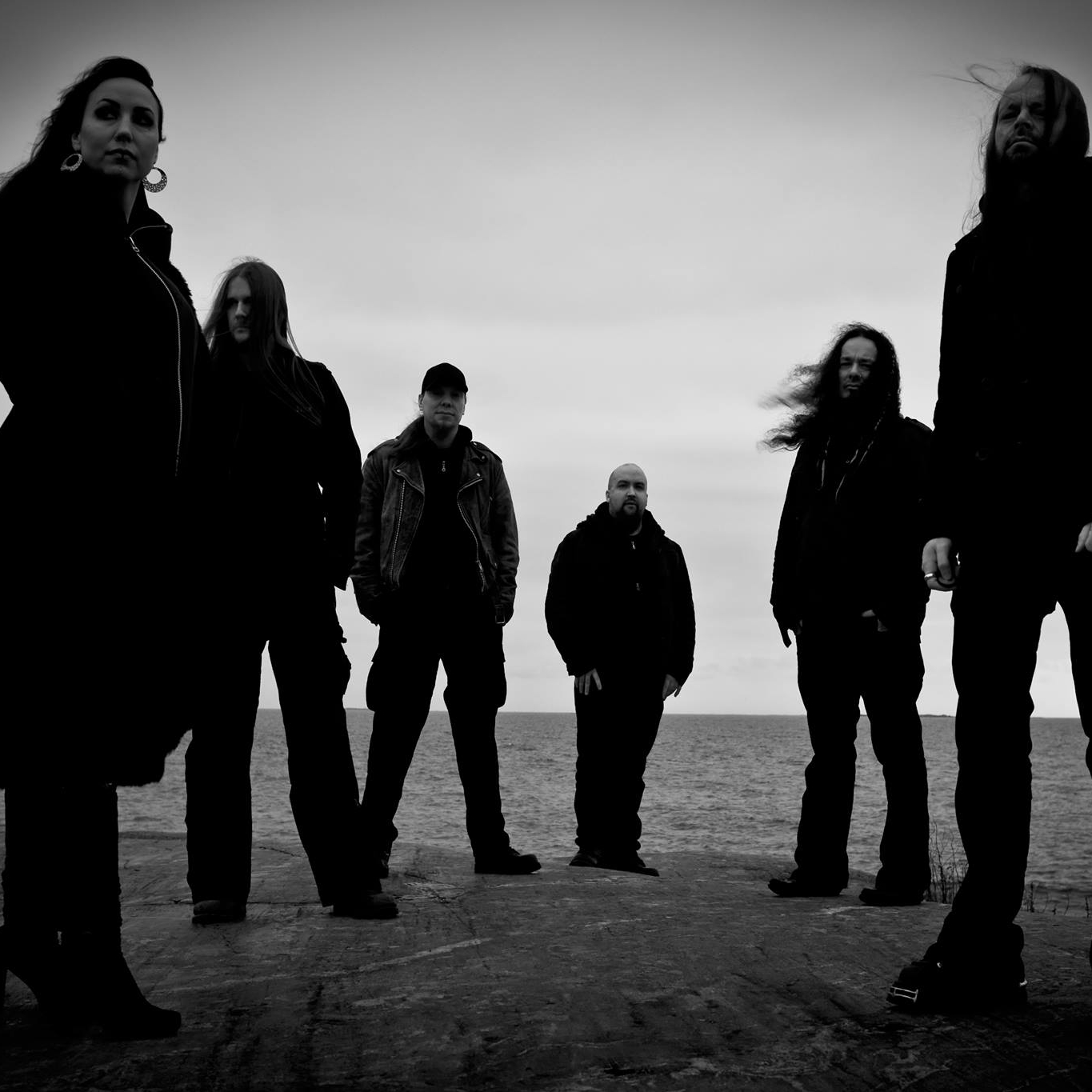
Return to the Void misses out on essential listening status for a few reasons, however. The major one is the band’s insistence on maintaining a similar pace throughout the album. I know, I know, it’s funeral doom, but even within this genre, there is wiggle-room for modulations in tempo and pacing. Return to the Void finds its groove and sticks resolutely to it, using the differences in vocal harmonies and synthesizers to mix things up. While this works in short bursts, taken as a whole, there simply isn’t enough variety within the 60 minute run-time. When you consider that the aesthetic is very similar to Monotony Fields, it sometimes feels like Shape of Despair are perhaps a little too comfortable in the (admittedly excellent) groove they find themselves in.
Nevertheless, Return to the Void is, quite simply, another feather in the cap of one of funeral doom’s most accomplished acts, even if it doesn’t quite reach the highs of Monotony Fields. Music this heavy and emotionally devastating requires a band at the top of its game to pull off, and Shape of Despair does not disappoint. If it occasionally feels like they are no longer ascending, but rather taking a stroll at the summit of the genre they helped define, so be it. This is still devastating and emotional music. Maybe you’re grieving, or struggling with the sadness around you. Maybe you’re wondering what it all means. Maybe everything is just a little grey right now. If so, I humbly suggest you give Return to the Void a spin. I believe you’ll see that even in the deepest sorrow, and darkest night, there is beauty.
Rating: 3.5/5.0
